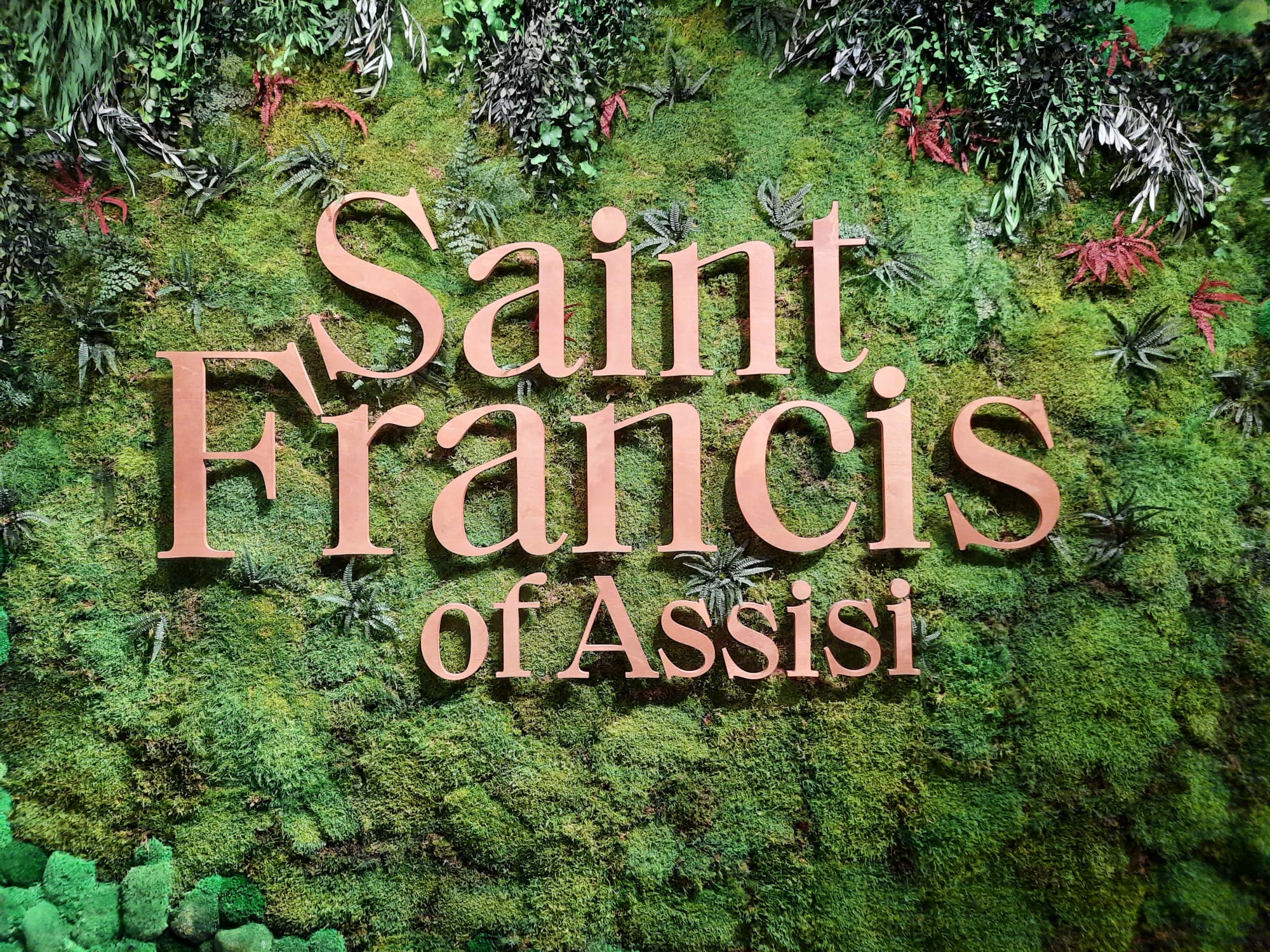Saint Francis Of Assisi – National Gallery, London (LAST CHANCE TO SEE)
This simple exhibition at the National Gallery tells the story of its simple subject, Saint Francis of Assisi, through art. It paints a picture of the saint as a source of inspiration throughout the centuries, and his continued relevance today.



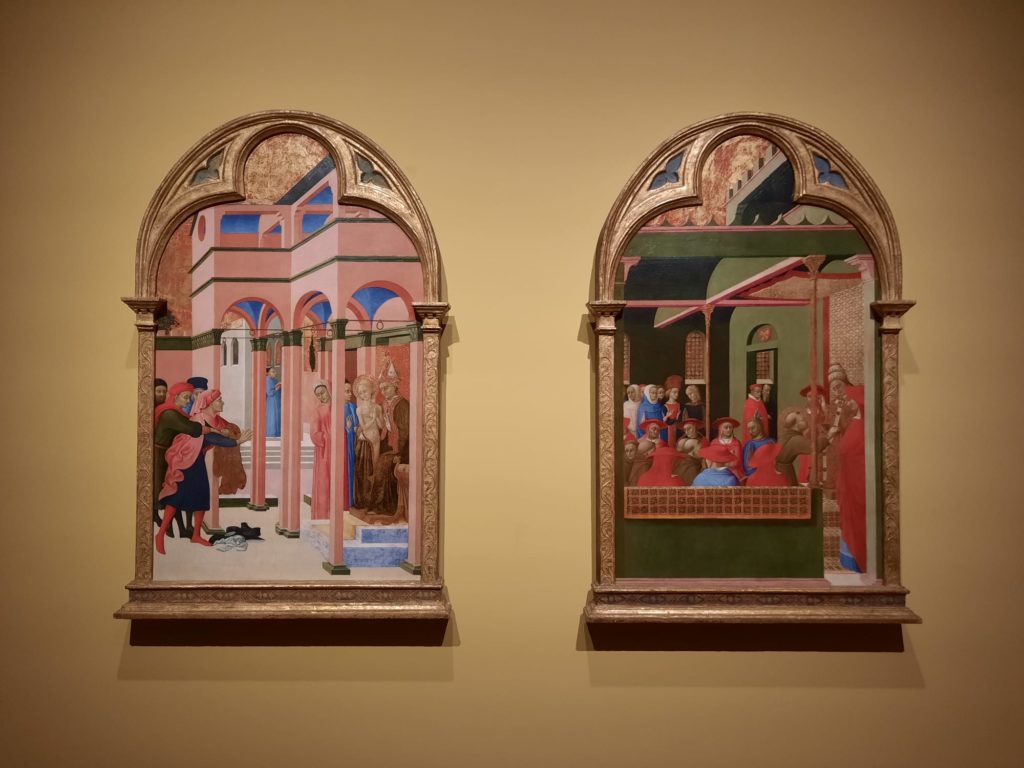


Saint Francis of Assisi
I really wanted to catch this small exhibition before it closed, partly because of the great reviews it’s had. But it’s also the first time (to my knowledge) I’ve been to an exhibition with a papal seal of approval, or to one which incorporates 13th Century relics amongst the artworks.
The exhibition, as the title would suggest, is all about Saint Francis of Assisi. Born Giovanni di Pietro di Bernardone in 1181 in Assisi. He enjoyed the trappings of his wealthy family as a youth, spending money freely and enjoying fine clothes. He became disillusioned with this life while still a young man, showing more of an interest in charity and spending time as a soldier. During a pilgrimage to Rome he had his first mystical experience, a vision of Jesus imploring him to restore his church (the institution or the literal church he was in at the time – you decide). Francis had a big, public fallout with his father some time after this, ultimately renouncing his father and his inheritance. He did various good works as a penitent, before gaining papal approval in 1208 to found a new order.
Even within his lifetime, the Franciscan order (Giovanni adopted the name Francis) exploded. After a meeting with a female follower of noble origin, it gained a female counterpart, the Poor Clares. Francis preached and sought converts, to audiences as varied as birds and the Sultan of Egypt. While praying on the mountain of Verna in 1224, Francis had another vision and received the stigmata. Various treatments of these holy wounds were unsuccessful, and he died in 1226. He was canonised only two years later. In the intervening centuries, Francis has remained a source of inspiration, both to Christians (the current pope chose the name Francis after him), artists, and lay people of various descriptions.
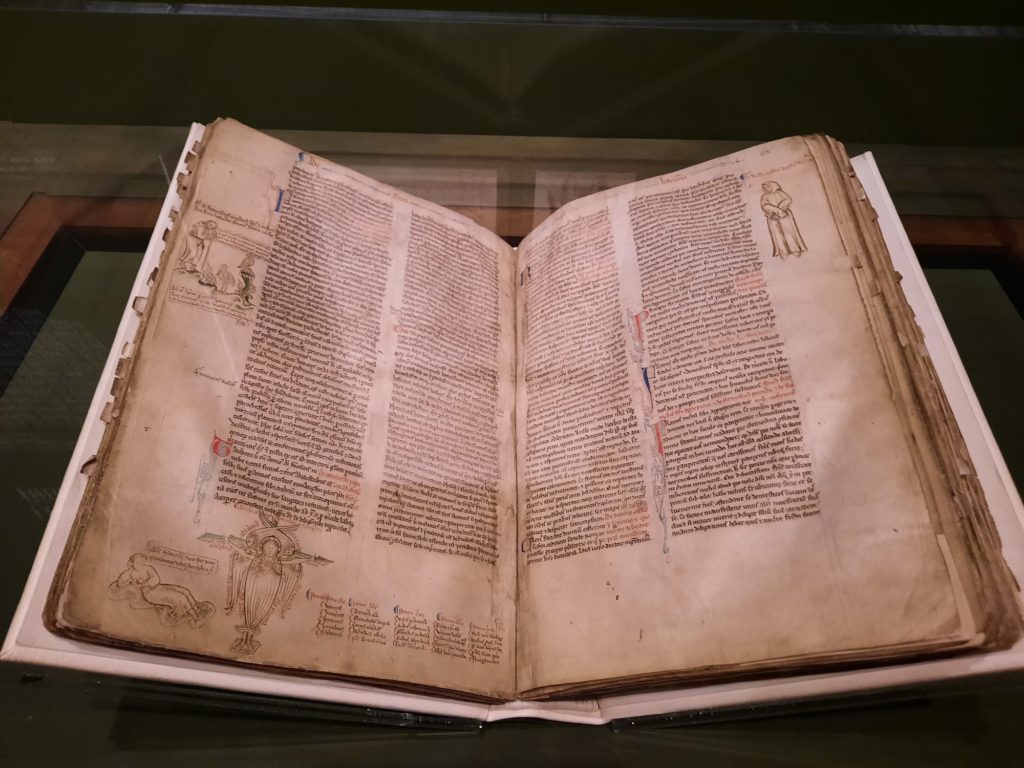

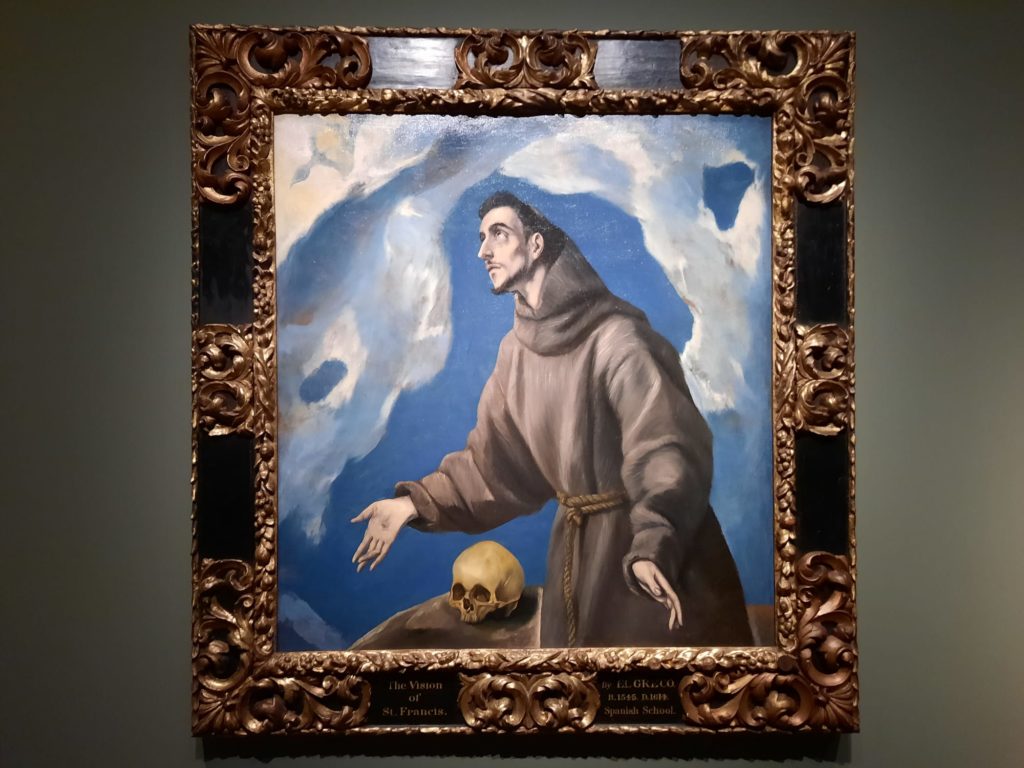
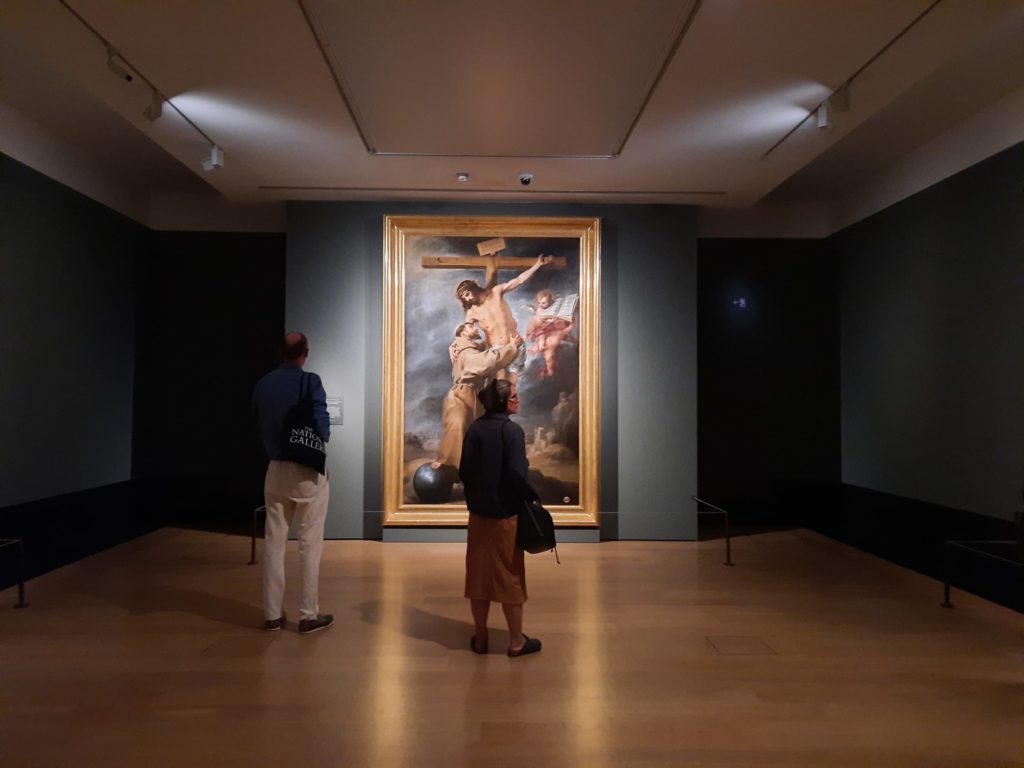


Francis As Artistic Inspiration
We are of course first and foremost here to consider how Saint Francis of Assisi has inspired artists over the centuries. This process began surprisingly early, and continues to the present day. The first room of the exhibition illustrates this well. A dark canvas by Baroque painter Francisco de Zurbarán is the background to a modern work by Antony Gormley, a lead-shrouded figure pierced with stigmata. On the side wall are three works by land artist Richard Long, including a new commission. In A Walk for Saint Francis (2022) the artist translates his sensory impressions from a week spent in solitude on Mount Subasio, an early refuge for the saint. Long’s River Avon Mud Crescent (2023), with its circular form and simple, natural format creates an early connection to Saint Francis’s Canticle of the Sun.
As we continue through the exhibition, it largely begins chronologically before breaking into a freer, more thematic interpretation. You come into an octagonal (or maybe hexagonal? I wasn’t counting walls) room, which contains a 15th Century series by Sassetta depicting major events from the saint’s life. The blonde, frail-looking Giovanni quickly transforms into a more familiar, tonsured, brown-habited Francis. This series is the anchor and point of return as you explore the first couple of rooms. From here you work your way around clockwise.
The first room off the Sassetta room has early works. One even apparently painted on a board on which Francis’s body was laid to rest. It’s evident just how quickly his renown spread: just a couple of decades after his canonisation, a monk in St Albans is doodling his sermon to the birds in an illuminated manuscript. Facsimiles of his surviving writings point to why: Francis had a comfortable, direct style of communication which evidently reached hearts and minds quickly.
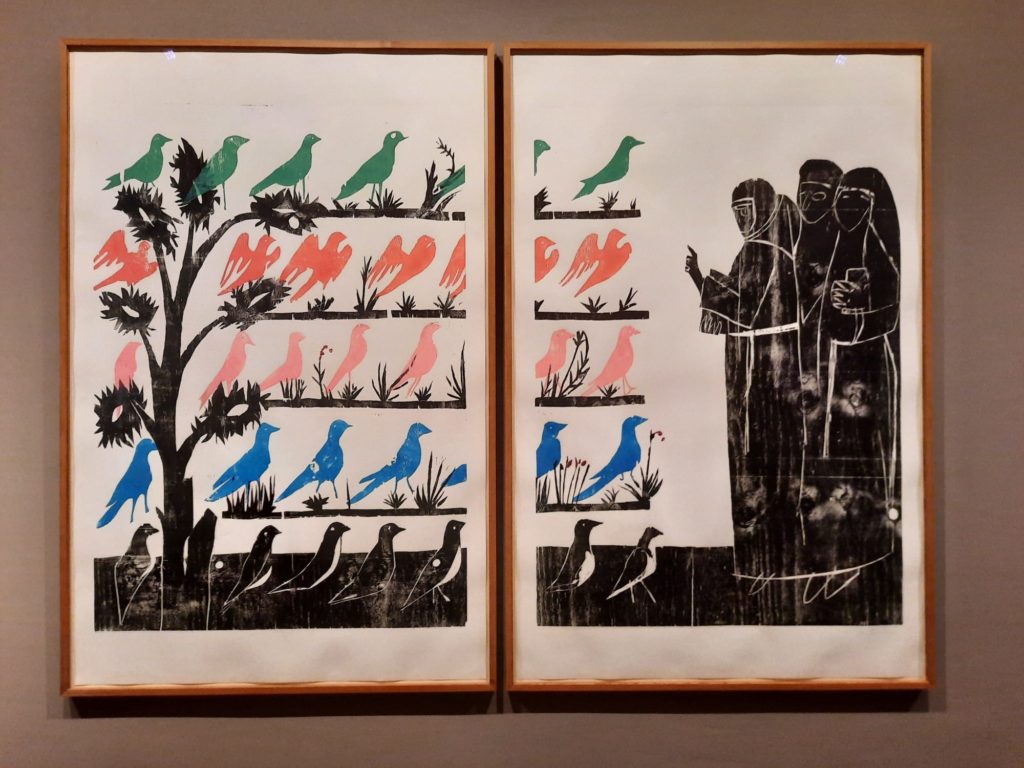


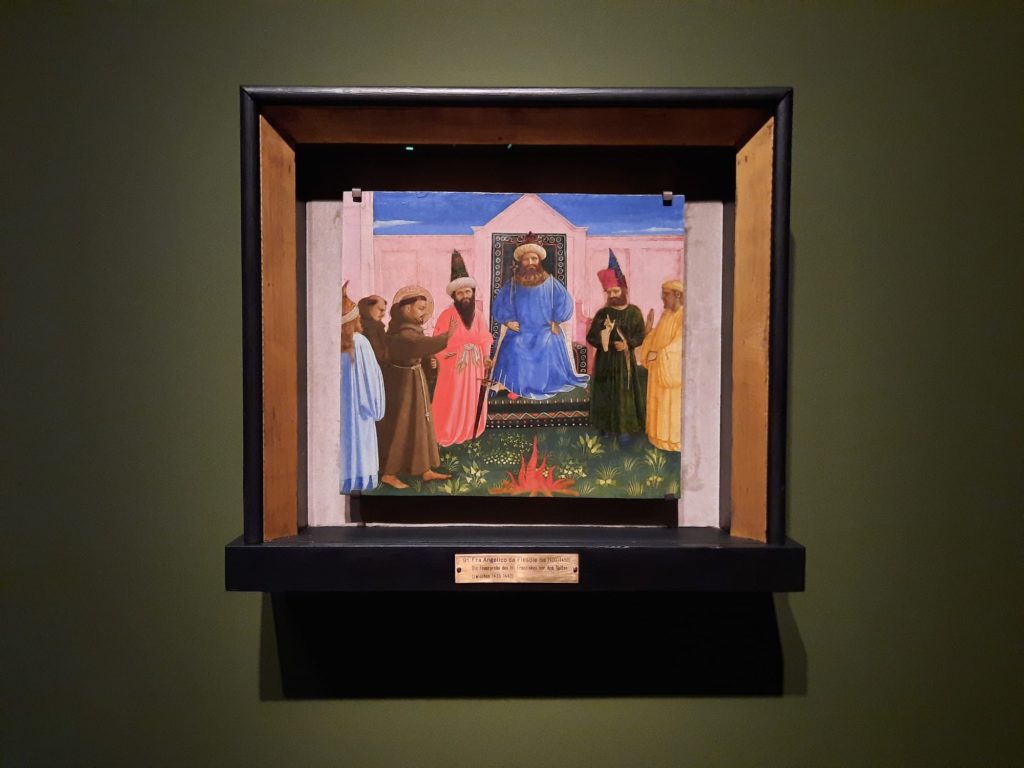
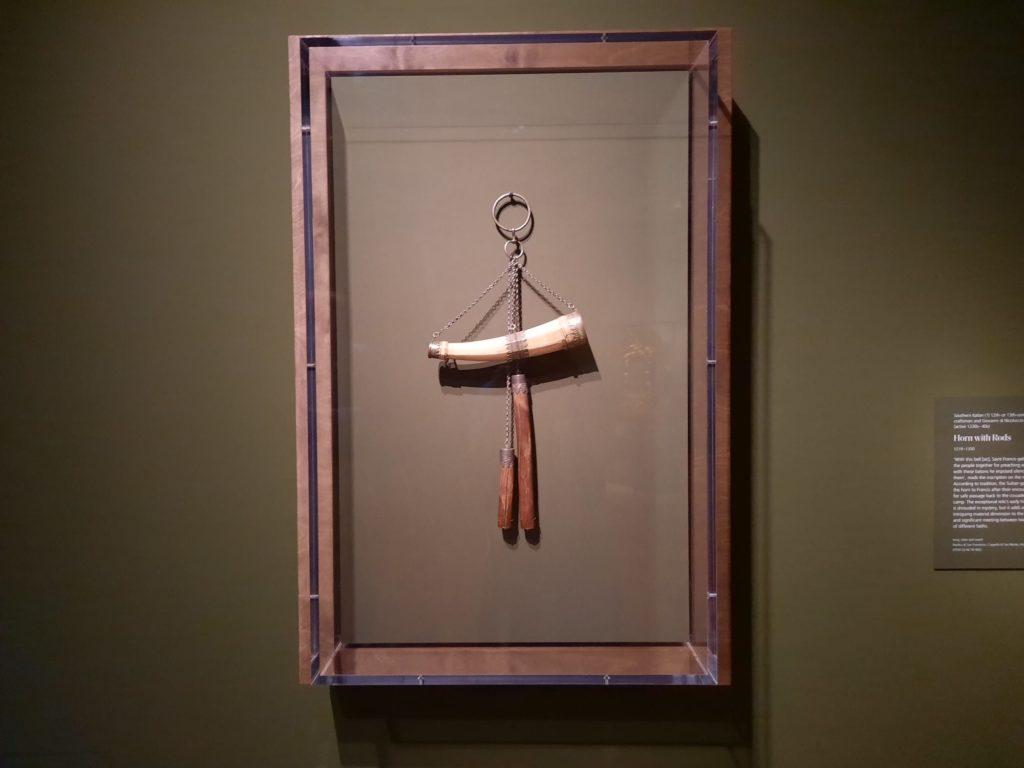
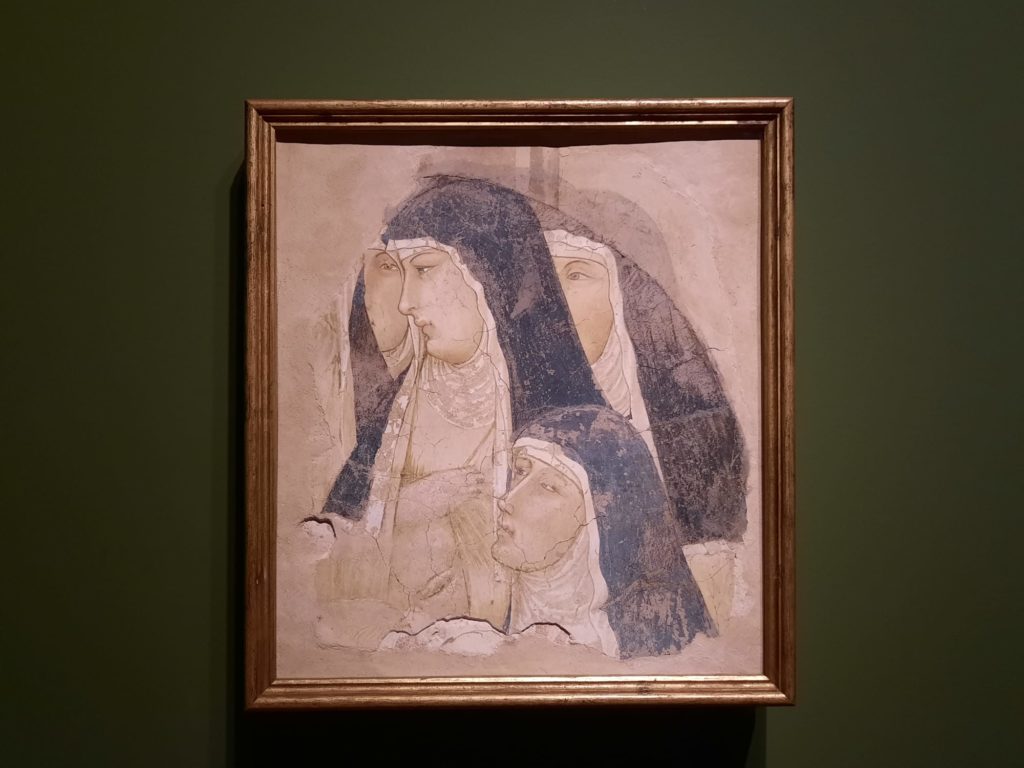
Francis As Inspiration For Life
The next room begins to demonstrate just why Saint Francis is such an enduringly important figure. In each era he is reinvented according to the preoccupations of the day. This room is full of Baroque paintings by all the big hitters. In this age Saint Francis was a mystic, the focus on his visions and stigmata. We see how Caravaggio, El Greco, Murillo and others interpreted these supernatural happenings. The paintings are often quite closely cropped, zooming in on Francis’s emotions and communication with the heavens.
The next room once more contains works from different periods. This is about Saint Francis’s relationship to the natural world and how this has been translated into different periods. There’s a charming academic painting showing the wolf and the villagers of Gubbio being friends. There’s a rediscovered work by ‘the last Pre-Raphaelite’ (depicted here). There are modern prints, and an imposing work of arte povera by Giuseppe Penone featuring a hollowed-out tree trunk. This is where we learn about the Canticle of the Sun, a song written by Saint Francis originally in the Umbrian dialect and celebrating the unity of all creation. This, plus the sermon to the birds, has seen Saint Francis reinvented as inspiration for ecological causes.
We then move through to the two final rooms. The next is very interesting indeed. Artworks exploring Saint Francis as a radical and the establishment of the Poor Clares are presented alongside religious relics: a tunic and horn believed to have belonged to Saint Francis himself. It’s fascinating: Alberto Burri’s Sacco (‘Sack’) of 1953 is transformed by its proximity to a 13th Century sackcloth tunic with religious connotations. It adds a contemplative element to the exhibition, and puts the religious artworks back into their original context.
That the exhibition ends with modern prints, representations in film and even a comic book, only serves to round out this multi-faced presentation of a complex individual.
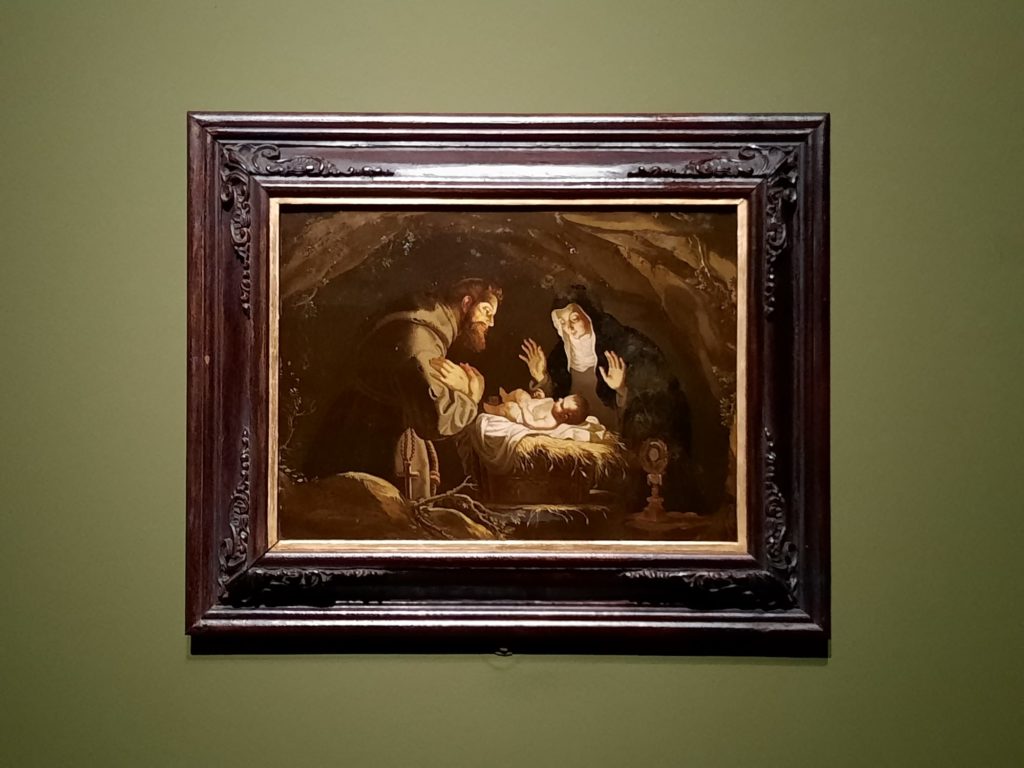




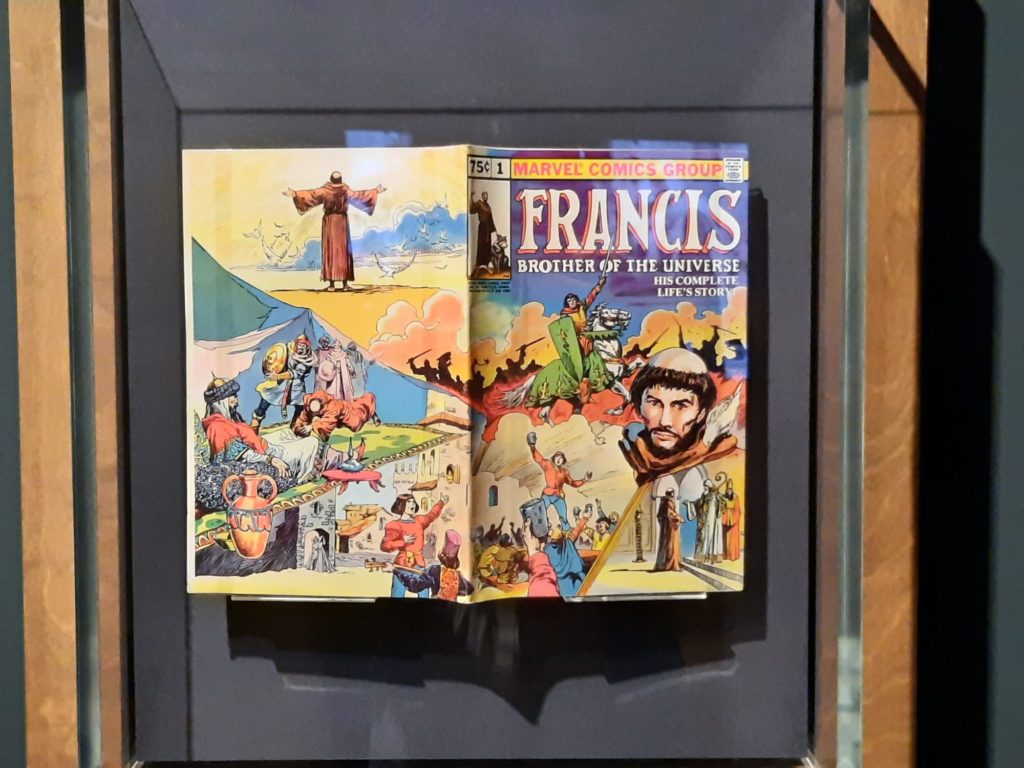
Final Thoughts
This is a great exhibition for two reasons: simplicity and quality. It’s an exhibition about just one man. It tells his story through art, and through well-chosen objects. There are a few themes within a mostly chronological display, to build a holistic picture of St Francis of Assisi as a man, religious figure, and subject for inspiration.
When it comes to quality, this manifests itself in a few ways. Firstly the great artworks. Most come from the National Gallery’s collections, but there are a few good loans (including the relics). They cover movements, centuries and perspectives (well, within reason – they’re all from Western artists I think). The texts support the exhibition’s key themes and pitch their information well. The curation is excellent throughout, in fact.
You don’t have long to catch this exhibition, but do make the effort if you’re able to. In keeping with the Franciscan approach to worldly goods it’s free, so the only excuse is opportunity. I’m glad I found one before the end of the month!
Salterton Arts Review’s rating: 4.5/5
Saint Francis of Assisi on until 30 July 2023
If you see this after your page is loaded completely, leafletJS files are missing.

